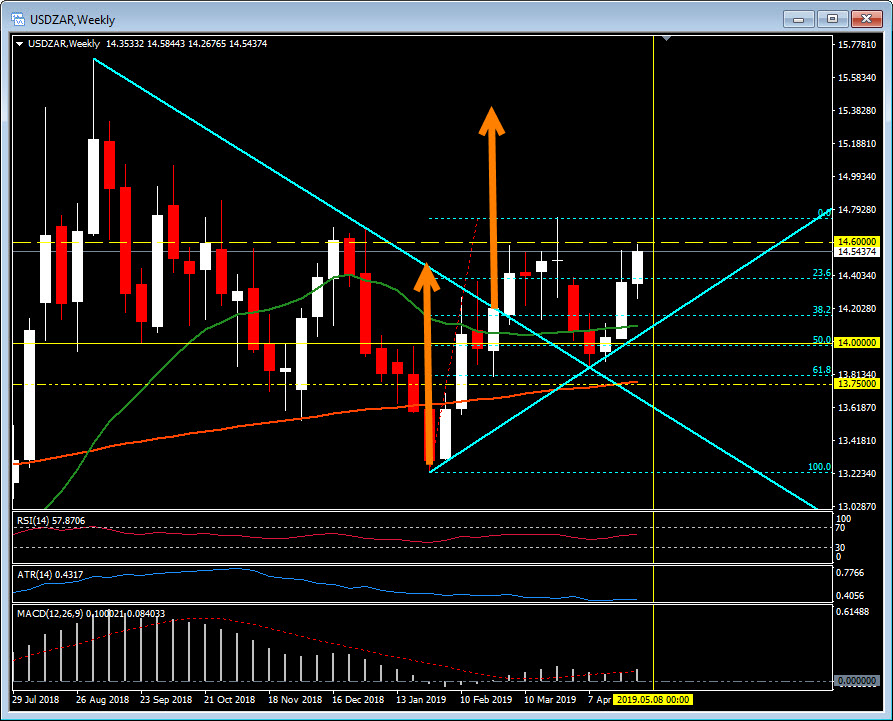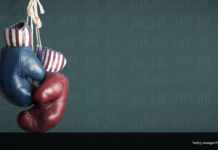USDZAR, Daily
With less than a week until Election Day the South African Rand (ZAR) remains pressured from a resurgent USD, as the pair trade at a 5-week high close to next resistance at 14.6000. Last time we looked at the pair (April 18) it had been trading under the key 200-day moving average for 10 trading days and was finding support at the 14.0000 and 50.0 Fibonacci level.
The greenback bid that characterized the final week of April saw a breach of the 200-day moving average and rally through the resistance level at 14.2000. As we wrote last time “a breach of the now converging 20 and 200-day moving averages and the 38.2 Fibonacci level around 14.2000 represents a key resistance zone”. This previous resistance zone is now a support area with the spike high on March 28 (14.7500) the next resistance area beyond 14.6000. The weekly time frame could suggest more upside to the 15.4000-5000 area should the 14.8000 zone be breached, with the rising trend line as support.
Today’s US NFP data and SA Polling day next Wednesday loom for the pair’s next move.
Stuart Cowell
Head Market Analyst
Disclaimer: This material is provided as a general marketing communication for information purposes only and does not constitute an independent investment research. Nothing in this communication contains, or should be considered as containing, an investment advice or an investment recommendation or a solicitation for the purpose of buying or selling of any financial instrument. All information provided is gathered from reputable sources and any information containing an indication of past performance is not a guarantee or reliable indicator of future performance. Users acknowledge that any investment in FX and CFDs products is characterized by a certain degree of uncertainty and that any investment of this nature involves a high level of risk for which the users are solely responsible and liable. We assume no liability for any loss arising from any investment made based on the information provided in this communication. This communication must not be reproduced or further distributed without our prior written permission.





















